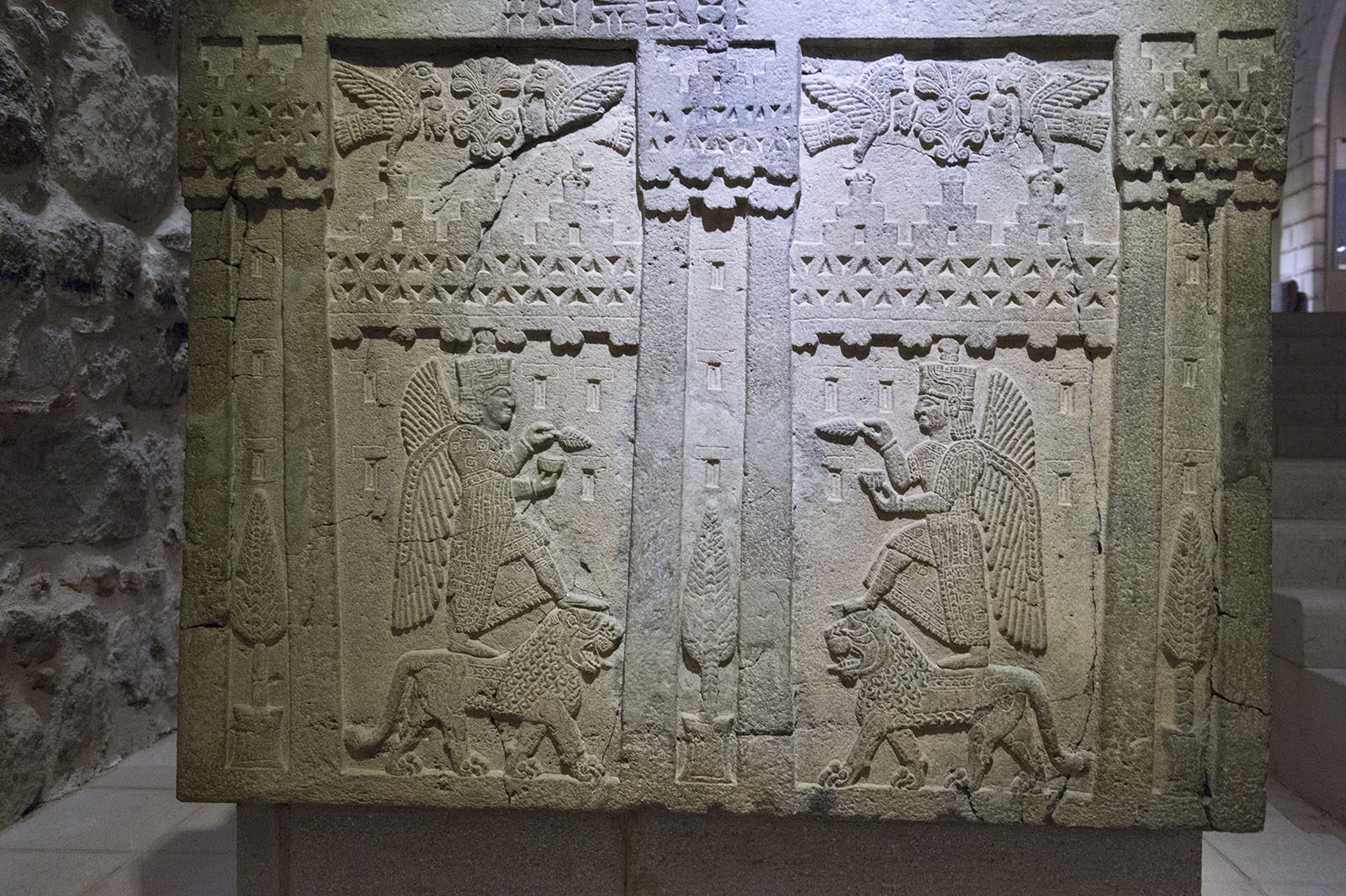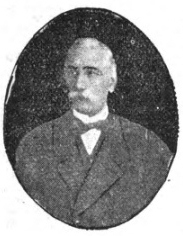|
Levon Aghababyan
Levon Aghababyan ( 1887–1915) was an Armenian mathematician, headmaster of high schools in Kütahya and Akşehir (1908–14), directed his own school in Kütahya for three years. Biography Levon was born in 1887 in Baghesh and graduated from the Sanasaryan College. From 1908 to 1914 he was first a teacher then a headmaster at the national colleges of Akshehir and Kutahya. He was a teacher of mathematics, opened a private school in Kutahya. The school existed for only three years. He also was an editor of the weekly ''Azatamart''. He was a victim of the Armenian genocide The Armenian genocide was the systematic destruction of the Armenians, Armenian people and identity in the Ottoman Empire during World War I. Spearheaded by the ruling Committee of Union and Progress (CUP), it was implemented primarily t .... References 1887 births 1915 deaths 20th-century Armenian mathematicians People from Bitlis People who died in the Armenian genocide Mathematicians ... [...More Info...] [...Related Items...] OR: [Wikipedia] [Google] [Baidu] |
Kütahya
Kütahya (; historically, Cotyaeum or Kotyaion; Ancient Greek, Greek: Κοτύαιον) is a city in western Turkey which lies on the Porsuk River, at 969 metres above sea level. It is the seat of Kütahya Province and Kütahya District. In 1957 Arthur Lane published an influential article in which he reviewed the history of pottery production in the region and proposed that 'Abraham of Kütahya' ware was produced from 1490 until around 1525, 'Damascus' and 'Golden Horn' ware were produced from 1525 until 1555 and 'Rhodian' ware from around 1555 until the demise of the İznik pottery industry at the beginning of the 18th century. This chronology has been generally accepted. Climate Kütahya has a mediterranean climate, warm-summer Mediterranean climate (Köppen climate classification: ''Csb''), or a temperate continental climate (Trewartha climate classification: ''Dc''), with chilly, wet, often snowy winters and warm, dry summers. Precipitation occurs mostly during the winter ... [...More Info...] [...Related Items...] OR: [Wikipedia] [Google] [Baidu] |
Akşehir
Akşehir is a municipality and Districts of Turkey, district of Konya Province, Turkey. Its area is , and its population is 93,965 (2022). It was known historically as Philomelium. The town is situated at the edge of a fertile plain, on the north side of the Sultan Mountains. Its elevation is . History Philomelion (Φιλομήλιον) was probably a Pergamene foundation on the great Graeco-Roman Highway from Ephesus to the east and Cicero, on his way to Cilicia, dated some of his extant correspondence there. St Paul passed the city on his second and third missionary journey in the first century and his impact can be traced by numerous Christian inscriptions in the region. The Smyrna, Smyrniotes wrote the letter that describes the martyrdom of Polycarp to the townspeople of Philomelion. The town became at some point a bishopric and remains a titular see of the Catholic Church. At some point after 1071, the city fell to the Seljuk Sultanate of Rum. It was retaken by forces of ... [...More Info...] [...Related Items...] OR: [Wikipedia] [Google] [Baidu] |
Bitlis
Bitlis ( or ; ) is a city in southeastern Turkey. It is the seat of Bitlis District and Bitlis Province.İl Belediyesi Turkey Civil Administration Departments Inventory. Retrieved 30 January 2023. Its population is 53,023 (2021). The city is located at an elevation of 1,545 metres, 15 km from Lake Van, in the steep-sided valley of the Bitlis River, a tributary of the Tigris River, Tigris. The local economy is mainly based on agricultural products which include fruits, grain and tobacco. Industry is fairly limited, and deals mainly with leatherworking, manufacture of tobacco products as well as weaving and dyeing of coarse cloth. Bitlis is connected to other urban centres by road, including Tatvan on Lake Van, 25 km to the northeast, and the cities of Muş (Mush), 100 km northwest, and Di ... [...More Info...] [...Related Items...] OR: [Wikipedia] [Google] [Baidu] |
Sanasarian College
The Sanasarian College (, ) was an Armenian language, Armenian-language educational institution in the city of Erzurum (called Erzurum, Karin by Armenians), Ottoman Empire founded in 1881 by an Armenian merchant, Mkrtich Sanasarian. Its students were children of primary and secondary school age. It also had a pedagogical department for the training of Armenian teachers and a trade school. Description It was a school of high grade which consisted of teachers who were mostly educated in Germany. The college had a nine-year course, with a high grade education that was taught. The school lasted until the Armenian genocide, when most of the teachers were killed and the building was ruined. Sanasarian college was a foremost institution for Culture of Armenia, Armenian culture and education in the eastern provinces during the decades before World War I. England, English explorer, writer, and natural historian Isabella Bird (1831–1904) described the college as follows: After the Arm ... [...More Info...] [...Related Items...] OR: [Wikipedia] [Google] [Baidu] |
Armenian Genocide
The Armenian genocide was the systematic destruction of the Armenians, Armenian people and identity in the Ottoman Empire during World War I. Spearheaded by the ruling Committee of Union and Progress (CUP), it was implemented primarily through the mass murder of around one million Armenians during death marches to the Syrian Desert and the Forced conversion, forced Islamization of others, primarily women and children. Before World War I, Armenians occupied a somewhat protected, but subordinate, place in Ottoman society. Large-scale massacres of Armenians had occurred Hamidian massacres, in the 1890s and Adana massacre, 1909. The Ottoman Empire suffered a series of military defeats and territorial losses—especially during the 1912–1913 Balkan Wars—leading to fear among CUP leaders that the Armenians would seek independence. During their invasion of Caucasus campaign, Russian and Persian campaign (World War I), Persian territory in 1914, Special Organization (Ottoman ... [...More Info...] [...Related Items...] OR: [Wikipedia] [Google] [Baidu] |
1887 Births
Events January * January 11 – Louis Pasteur's anti- rabies treatment is defended in the Académie Nationale de Médecine, by Dr. Joseph Grancher. * January 20 ** The United States Senate allows the United States Navy to lease Pearl Harbor as a naval base. ** British emigrant ship '' Kapunda'' sinks after a collision off the coast of Brazil, killing 303 with only 16 survivors. * January 21 ** The Amateur Athletic Union (AAU) is formed in the United States. ** Brisbane receives a one-day rainfall of (a record for any Australian capital city). * January 24 – Battle of Dogali: Abyssinian troops defeat the Italians. * January 28 ** In a snowstorm at Fort Keogh, Montana, the largest snowflakes on record are reported. They are wide and thick. ** Construction work begins on the foundations of the Eiffel Tower in Paris, France. February * February 2 – The first Groundhog Day is observed in Punxsutawney, Pennsylvania. * February 4 – The Interstate Comme ... [...More Info...] [...Related Items...] OR: [Wikipedia] [Google] [Baidu] |
1915 Deaths
Events Below, the events of World War I have the "WWI" prefix. January *January – British physicist Sir Joseph Larmor publishes his observations on "The Influence of Local Atmospheric Cooling on Astronomical Refraction". *January 1 ** WWI: British Royal Navy battleship HMS Formidable (1898), HMS ''Formidable'' is sunk off Lyme Regis, Dorset, England, by an Imperial German Navy U-boat, with the loss of 547 crew. **WWI: Battle of Broken Hill: A train ambush near Broken Hill, Australia, is carried out by two men (claiming to be in support of the Ottoman Empire) who are killed, together with four civilians. * January 5 – Joseph E. Carberry sets an altitude record of , carrying Capt. Benjamin Delahauf Foulois as a passenger, in a fixed-wing aircraft. * January 12 ** The United States House of Representatives rejects a proposal to give women the right to vote. ** ''A Fool There Was (1915 film), A Fool There Was'' premières in the United States, starring Theda Bara as a '' ... [...More Info...] [...Related Items...] OR: [Wikipedia] [Google] [Baidu] |
People From Bitlis
The term "the people" refers to the public or common mass of people of a polity. As such it is a concept of human rights law, international law as well as constitutional law, particularly used for claims of popular sovereignty. In contrast, a people is any plurality of persons considered as a whole. Used in politics and law, the term "a people" refers to the collective or community of an ethnic group or nation. Concepts Legal Chapter One, Article One of the Charter of the United Nations states that "peoples" have the right to self-determination. Though the mere status as peoples and the right to self-determination, as for example in the case of Indigenous peoples (''peoples'', as in all groups of indigenous people, not merely all indigenous persons as in ''indigenous people''), does not automatically provide for independent sovereignty and therefore secession. Indeed, judge Ivor Jennings identified the inherent problems in the right of "peoples" to self-determination, as i ... [...More Info...] [...Related Items...] OR: [Wikipedia] [Google] [Baidu] |
Mathematicians From The Ottoman Empire
A mathematician is someone who uses an extensive knowledge of mathematics in their work, typically to solve mathematical problems. Mathematicians are concerned with numbers, data, quantity, structure, space, models, and change. History One of the earliest known mathematicians was Thales of Miletus (); he has been hailed as the first true mathematician and the first known individual to whom a mathematical discovery has been attributed. He is credited with the first use of deductive reasoning applied to geometry, by deriving four corollaries to Thales's theorem. The number of known mathematicians grew when Pythagoras of Samos () established the Pythagorean school, whose doctrine it was that mathematics ruled the universe and whose motto was "All is number". It was the Pythagoreans who coined the term "mathematics", and with whom the study of mathematics for its own sake begins. The first woman mathematician recorded by history was Hypatia of Alexandria ( – 415). She succe ... [...More Info...] [...Related Items...] OR: [Wikipedia] [Google] [Baidu] |







